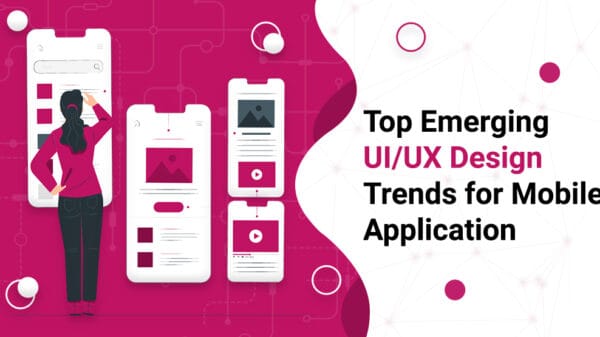In the digital age, user experience (UX) has become a key differentiator for businesses seeking to gain a competitive edge. User-centered UI/UX design, with its focus on understanding and meeting user needs, has emerged as a powerful approach to creating exceptional digital experiences. By placing users at the center of the design process, UI/UX designers can optimize interfaces, streamline interactions, and deliver intuitive and engaging experiences that leave a lasting impact on users.
User-centered design starts with extensive research and analysis to gain insights into user behaviors, goals, and pain points. Through techniques such as user interviews, surveys, and usability testing, designers can uncover valuable information that informs the design process. By empathizing with users and understanding their perspectives, designers can create interfaces that align with their mental models, making it effortless for them to navigate and accomplish tasks.
The power of user-centered UI/UX design lies in its ability to enhance usability, intuitiveness, and satisfaction. By designing interfaces that are easy to use, intuitive, and visually appealing, businesses can create positive user experiences that build trust and loyalty. Engaged and satisfied users are more likely to become loyal customers, advocate for the brand, and contribute to the business’s success.
In this article, we will delve deeper into the power of user-centered UI/UX design and explore the various principles and methodologies that contribute to an exceptional user experience. We will highlight real-world examples and best practices to demonstrate how businesses can leverage user-centered design principles to create interfaces that delight users and drive business growth.
Understanding User-Centered Design
In today’s digital landscape, user experience (UX) has become a pivotal factor in determining the success of a product or service. It involves gathering insights into users’ needs, goals, and behaviors through research and feedback channels. User-centered design (UCD) is a powerful approach that puts users at the forefront of the design process, aiming to create intuitive, usable, and delightful experiences. By empathizing with users and involving them throughout the design process, UI/UX designers can create intuitive, usable, and engaging digital experiences that meet users’ expectations.
Fostering Usability and Intuitiveness
User-centered UI/UX design focuses on creating interfaces that are intuitive and easy to use. By conducting user research and employing techniques such as user personas, user flows, and wireframing, designers gain a deep understanding of users’ mental models and preferences. This understanding helps in designing interfaces with logical information architecture, clear navigation, and efficient interaction patterns, ultimately fostering usability and making it effortless for users to achieve their goals.
Enhancing Engagement and Satisfaction
A user-centered approach goes beyond mere usability. It aims to create engaging and delightful experiences that leave a lasting positive impression on users. By incorporating user feedback and iterative design processes, UI/UX designers can craft visually appealing interfaces, leverage interactive elements, and create emotionally resonant experiences. This, in turn, enhances user satisfaction, increases user engagement, and fosters brand loyalty.
Driving Business Success
User-centered UI/UX design is not just about creating enjoyable experiences for users; it also drives business success. Satisfied and engaged users are more likely to convert, become loyal customers, and recommend the product or service to others. A well-designed user interface that aligns with user expectations and needs can lead to higher user retention rates, increased conversions, and ultimately, a positive impact on the bottom line.
Conclusion
User-centered UI/UX design is a transformative approach that has the power to elevate user experiences and drive business success. By placing users at the forefront of the design process, businesses can create interfaces and interactions that meet their needs, exceed their expectations, and foster a strong connection with their target audience.
Through user research, empathy, and iterative design, user-centered UI/UX design ensures that digital products and services are intuitive, usable, and engaging. It goes beyond aesthetics and functionality, striving to create meaningful experiences that leave a lasting positive impression on users.
By investing in user-centered UI/UX design, businesses can unlock numerous benefits, including increased user satisfaction, higher user engagement, improved brand perception, and ultimately, increased conversions and business growth. Embracing user-centered design principles and integrating them into the design and development processes will undoubtedly lead to enhanced user experiences and a competitive edge in today’s digital landscape.
Matthew Brain, an experienced content writer, enjoys sharing his thoughts on various online delivery firms, eCommerce, on-demand business models, and so on. Furthermore, he has assisted numerous entrepreneurs by providing them with advice on Internet enterprises and their influence on the market.























































































































































































